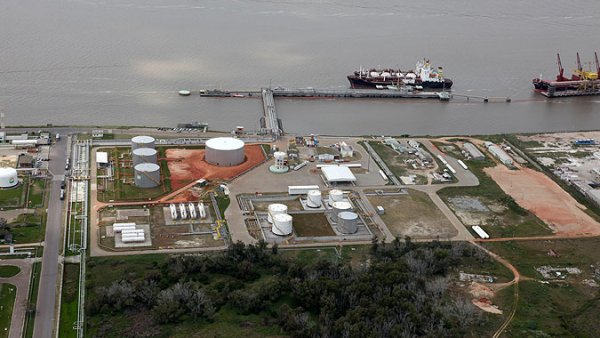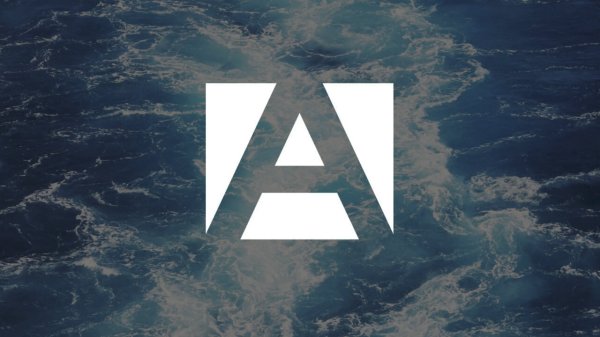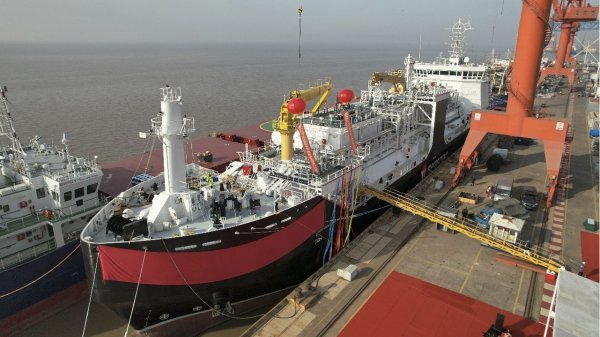Harris Pye confirms cruise ship scrubber contracts
Company currently installing scrubber systems on a number of cruise vessels. Projects to be completed throughout the year.
Harris Pye Engineering Group says it is currently engaged in providing turnkey scrubber installation packages for major cruise line companies. The company recently completed the installation of an advanced emission purification (AEP) system, fully automated, which has been DNV GL-certified and is said to comply with MARPOL regulation 14 of Annex VI for the control of emissions.
The design package for open and closed loop systems was utilized to model and fabricate all piping systems, hardware integration, and steelworks. Along with new exhaust tail pipes, sea chests were installed with the vessel in service along with the associated overboard discharges. A new decorative funnel extension was designed, fabricated and installed to encapsulate the scrubber tower, and a newly constructed technical room, which houses the AEP hybrid components.
To accommodate the operating fluid systems correctly, new tanks, together with on-board conversions to existing tanks, were engineered and fabricated with special coatings applied. Electrical power, distribution and automation systems were installed by Harris Pye staff.
Harris Pye says it is also currently installing similar systems on other large cruise vessels with completions scheduled throughout the year.
The installations currently under way and already installed are in response to the need to reduce sulphur emissions from fuel and the recent implementation of more stringent rules within Annex VI of the 1997 MARPOL protocol, which have seen sulphur emissions significantly reduced to 0.1 percent in Emission Control Areas (ECAs).
On either 1st January 2020 or 1st January 2025 - depending on the outcome of a review by the International Maritime Organization (IMO) - a new regulation will enter into force limiting the sulphur emissions for vessels worldwide to 0.5 percent. This will require vessels to either switch to a compliant fuel or install an exhaust gas cleaning system in order to comply with the new rules.
"Not surprisingly, we are seeing a marked increase in interest in complete turnkey installation packages for exhaust gas scrubber systems; from initial site surveys, feasibility studies, 3D laser scanning/modelling ultimately progressing to detailed engineering and design, leading to a cost effective installation programme," explained Chris David, Harris Pye's Chief Technical Officer.
"With workshops in the UK, Middle East, Asia and Brazil, we can offer an efficient and economical alternative to onsite production through prefabrication prior to installation, thereby reducing installations costs and disruption to a ship's itinerary. All our workshop facilities are compliant with the following standard certifications: ISO 9001, API QI, ASME S.R.U Stamps, GL Workshop (welding) and EN 1090 Execution Class 2.
"Vessel owners are able to benefit from local and globally discounted supply chain costs and reduced installation times. Harris Pye Engineering's workforce includes fully versed, certified and accredited skilled workers for both GRE, GRVE and conventional steel piping, all managed by dedicated project management teams liaising and coordinating with vessel owners on a daily basis to ensure seamless and efficient installations."
The design package for open and closed loop systems was utilized to model and fabricate all piping systems, hardware integration, and steelworks. Along with new exhaust tail pipes, sea chests were installed with the vessel in service along with the associated overboard discharges. A new decorative funnel extension was designed, fabricated and installed to encapsulate the scrubber tower, and a newly constructed technical room, which houses the AEP hybrid components.
To accommodate the operating fluid systems correctly, new tanks, together with on-board conversions to existing tanks, were engineered and fabricated with special coatings applied. Electrical power, distribution and automation systems were installed by Harris Pye staff.
Harris Pye says it is also currently installing similar systems on other large cruise vessels with completions scheduled throughout the year.
The installations currently under way and already installed are in response to the need to reduce sulphur emissions from fuel and the recent implementation of more stringent rules within Annex VI of the 1997 MARPOL protocol, which have seen sulphur emissions significantly reduced to 0.1 percent in Emission Control Areas (ECAs).
On either 1st January 2020 or 1st January 2025 - depending on the outcome of a review by the International Maritime Organization (IMO) - a new regulation will enter into force limiting the sulphur emissions for vessels worldwide to 0.5 percent. This will require vessels to either switch to a compliant fuel or install an exhaust gas cleaning system in order to comply with the new rules.
"Not surprisingly, we are seeing a marked increase in interest in complete turnkey installation packages for exhaust gas scrubber systems; from initial site surveys, feasibility studies, 3D laser scanning/modelling ultimately progressing to detailed engineering and design, leading to a cost effective installation programme," explained Chris David, Harris Pye's Chief Technical Officer.
"With workshops in the UK, Middle East, Asia and Brazil, we can offer an efficient and economical alternative to onsite production through prefabrication prior to installation, thereby reducing installations costs and disruption to a ship's itinerary. All our workshop facilities are compliant with the following standard certifications: ISO 9001, API QI, ASME S.R.U Stamps, GL Workshop (welding) and EN 1090 Execution Class 2.
"Vessel owners are able to benefit from local and globally discounted supply chain costs and reduced installation times. Harris Pye Engineering's workforce includes fully versed, certified and accredited skilled workers for both GRE, GRVE and conventional steel piping, all managed by dedicated project management teams liaising and coordinating with vessel owners on a daily basis to ensure seamless and efficient installations."

|
IMO approves pricing mechanism based on GHG intensity thresholds
Charges to be levied on ships that do not meet yearly GHG fuel intensity reduction targets. |
|
|
|
||

|
VARO Energy expands renewable portfolio with Preem acquisition
All-cash transaction expected to complete in the latter half of 2025. |
|
|
|
||

|
NYK trials biofuel in milestone coal carrier test
Vessel is used to test biofuel for domestic utility company. |
|
|
|
||

|
H-Line Shipping orders LNG bunkering vessel
Vessel with 18,000-cbm capacity to run on both LNG and MDO. |
|
|
|
||

|
How to engineer and manage green shipping fuels | Stanley George, VPS
Effective management strategies and insights for evolving fuel use. |
|
|
|
||

|
Swedish government bans scrubber wastewater discharges
Discharges from open-loop scrubbers to be prohibited in Swedish waters from July 2025. |
|
|
|
||

|
MAN Energy Solutions achieves 100% load milestone for ammonia engine
Latest tests validate fuel injection system throughout the entire load curve. |
|
|
|
||

|
Petrobras secures ISCC EU RED certification for B24 biofuel blend at Rio Grande
Blend consisting of 24% FAME is said to have been rigorously tested to meet international standards. |
|
|
|
||

|
Stolt-Nielsen to fully control Avenir LNG with acquisition
Share purchase agreement to buy all shares from Golar LNG and Aequitas. |
|
|
|
||

|
Bureau Veritas supports launch of CIMC SOE's LNG bunkering vessel
Handover of Seaspan Energy's cutting-edge 7,600-cbm vessel completed. |
|
|
|
||
Related Links
- · H.P. Wegener reports fuel savings as scrubber milestone is reached [Insights]
- · Bulk carrier to use Dupont hybrid scrubber [Insights]
- · Scrubbers better for health than HFO ban, says report [Insights]
- · First vessel with 'Scrubber Ready' notation christened [Insights]
- · Finnlines secures funding to retrofit scrubbers [Insights]

